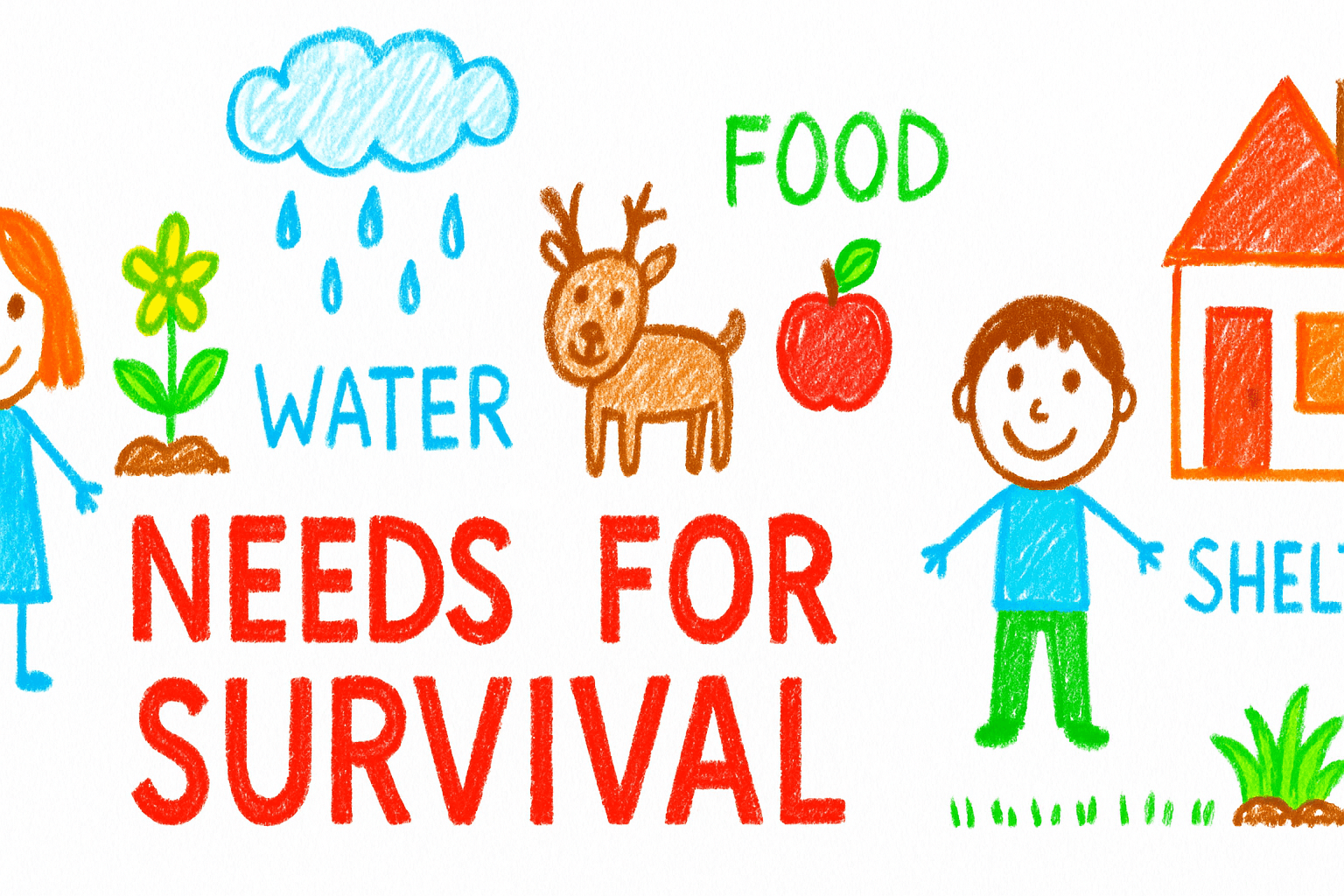Week 2: Survival Needs
Weekly Focus
Children explore what it means to survive and investigate the basic needs of plants and animals, including water, light, food, and shelter through hands-on experiments and activities.
Week at a Glance
- Understand what "survive" means
- Recognize that all living things need water
- Learn that plants need light to live and grow
- Understand that animals need food to survive

Weekly Overview
Theme
Survival Needs
Focus Areas
- Survival basics
- Plant needs
- Animal needs
- Food chains
Key Vocabulary
Plant Experiments
Daily Plans
Monday: What Does It Mean to Survive?
Daily schedule and activities
Morning Activity
Morning Circle: Introduce the concept of survival through scenarios
Literacy Focus
Watch video about survival needs of living things
Math Focus
Count and sort picture cards of survival needs
Afternoon Activity
Create a class chart about what it means to survive
Materials Needed
- Video about survival
- Picture cards of survival needs
- Chart paper
- Art supplies
- Scenario cards
Assessment Notes
Observe students' understanding of the concept of survival and their ability to identify basic survival needs.
Featured Activities
Plant Survival Experiment
Students set up an experiment with multiple plants in different conditions (with/without water, with/without light) and observe the results over several days.
Duration
Initial setup: 30 minutes, Daily observations: 10 minutes
Materials
- Small plants or seeds
- Clear cups
- Soil
- Water
- Observation journals
- Markers
Learning Areas
Plant Shop Dramatic Play
Students explore different plant needs through a dramatic play plant shop, where they 'purchase' items plants need to survive like sunlight, water, and soil.
Duration
Ongoing center
Materials
- Play money
- Plant pictures
- Price tags
- Shop signs
- Plant care cards
Learning Areas
Animal Food Sorting
Students sort pictures of animals based on what they eat (plants, other animals, or both) and create a collaborative chart.
Duration
35 minutes
Materials
- Animal pictures
- Food pictures
- Sorting mats
- Chart paper
- Glue
Learning Areas
Survival Obstacle Course
Students move through an obstacle course that simulates how plants get what they need (reaching for sunlight, finding water) and how animals find food and shelter.
Duration
45 minutes
Materials
- Tunnels
- Cones
- Toy sun
- Water jugs
- Animal masks
Learning Areas
Making Abstract Concepts Concrete
Resources
Books
- "The Tiny Seed" by Eric Carle
- "From Seed to Plant" by Gail Gibbons
- "The Very Hungry Caterpillar" by Eric Carle
- "What Do Living Things Need?" by Elizabeth Austen
- "I Can't Live Here" by Pamela Hickman
Printables
- Plant needs observation sheets
- Animal food sorting cards
- Plant and animal needs comparison chart
- Survival needs checklist
- Plant growth recording sheets
Home Connection
Send home a family activity sheet that encourages parents/caregivers to help their child identify and care for living things at home, focusing on what plants and pets need to survive.
